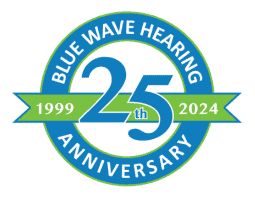- Alcohol and Hearing Health - April 9, 2025
- How Smoking Can Harm Your Ears - March 11, 2025
- Succeeding in the Workplace with Hearing Aids - February 10, 2025
Protect your tech while on vacation
No part of summer is more exciting than going on vacation! Whether it’s a family trip, a romantic getaway, or a relaxing solo excursion, traveling with hearing aids requires a little extra planning and awareness. To prepare for conditions that may damage or reduce the effectiveness of your technology, research your travel destination ahead of time and bring any concerns you might have to your audiologist’s attention. He or she can then recommend appropriate protection products and best practices for hearing aid care in that particular environment. For inspiration, check out these five excellent vacation spots.
Sedona, Arizona
With first-rate resorts, luscious golf courses, close proximity to the Grand Canyon, and breathtaking natural scenery of its own, Sedona is quickly becoming a top vacation spot for people of all ages. If you wear hearing aids, you may think that visiting an arid place means not worrying about your technology, but dusty, hot environments can present a danger. In the desert, wind and heat are your biggest enemies, so make sure to store hearing aids in a cool place when not in use, and while outdoors, consider wearing a hat or scarf to prevent dust from being blown into the units. Nightly cleaning with a soft cloth is recommended.
Florida
Orlando, Key West, Miami, the Everglades — these are but a few of the amazing tourist destinations awaiting you in Florida. The climate is subtropical, so special care must be taken to protect hearing aids from the ambient moisture in the air as well as sweat. Unlike in dry environments, your sweat won’t fully evaporate, which means more ends up near your ears. To prevent this, a sweatband may be worn around the head. Ask your audiologist about moisture-repellent sleeves that fit over the external components of your aids to add extra protection. Cleaning your aids often and placing them in a dehumidifier overnight is also highly encouraged.
Oslo, Norway
For the traveler who isn’t impressed by warm climes, there are arctic destinations that offer a plethora of exciting activities and cultural experiences. Oslo is among the best, boasting winter sports of every variety and wonderful museums dedicated to the works of Edvard Munch and Henrik Ibsen, among others. To keep your hearing aids in top shape in an icy environment, wear a wool hat or earmuffs when outdoors. This prevents extreme temperatures from damaging the delicate electronics inside and protects them from snow. Cold can also affect battery life, so bring extra, and always remove them from your aids when not in use. Before you go to bed each night, wipe down the battery compartment with a dry cloth to ensure no condensation has built up.
Machu Picchu, Peru
For lovers of high adventure and historical sites, nothing beats the splendor of these South American ruins. Hiking to Machu Picchu is challenging for a number of reasons, but folks with hearing troubles will face extra roadblocks. While the elevation at the site itself is less than 8,000 feet (comparable to a jaunt to the Rocky Mountains), the elevation in nearby Cusco, where most travelers book accommodations, is measured at around 11,000 feet. High altitudes require a 24-hour period of acclimatization and are notorious for exacerbating tinnitus. If you are currently being treated for tinnitus, discuss travel plans with your audiologist before venturing to locales high above sea level. Your hearing aids may need to be adjusted.
Hawaii
No vacation list is complete without Hawaii. You’ll experience a variety of potentially problematic situations in this tropical paradise, as the weather across the islands can change rapidly — and you’ll want to ensure the area you’re visiting is safe in the wake of recent volcanic activity. The most important consideration for your technology is keeping it dry. Sudden showers can break in the afternoons, and water sports such as boating, surfing, or scuba diving can pose significant risks. If removing your hearing aids puts too much of a damper on things, ask your audiologist about water-resistant options.
Bonus: Cruising With Hearing Aids
While most major cruise-ship lines are equipped to accommodate hearing-impaired guests, there are a few that offer an exceptional experience including special rooms, visual alert kits, assistive listening devices, sign language interpreters, and closed captioning on in-cabin movies:
- Holland America Line
- Disney Cruise Line
- Norwegian Cruise Line
When cruising with hearing aids, always remember to bring your storage and cleaning kits, dehumidifier, extra batteries, Bluetooth® accessories, and a splash guard!
Contact us now for a free clean and check and more information on our hearing aid protection products!


